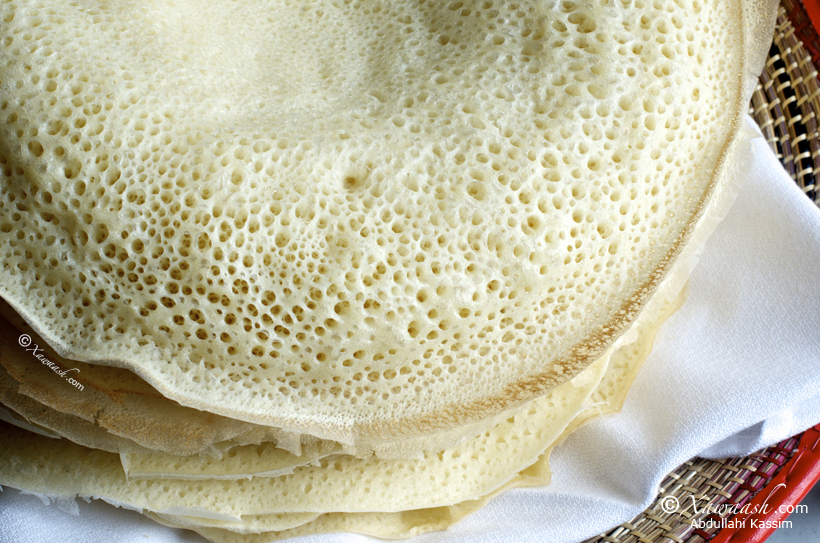22 April 2014
Ethiopian food is rich in spices, the most common being a blend called Berbere (pronounced ” ber-beray”), a mixture which includes ginger, garlic, fiery red chile, salt, fenugreek seeds, cardamom, black pepper, cinnamon, turmeric and garlic. It’s used predominately in stews and it is also converted to a paste to flavor meats.
Instead of using utensils, Ethiopians use a sponge like sourdough flat bread called injera, to scoop up their food with their hands. Injera is made from teff flour and is cooked on a griddle to the consistency of a thin flatbread. It is a bit like a crepe but is not egg-based and is more like a thin pancake. The main ingredient, teff, is an ancient grass originally cultivated in Ethiopia and believed to be the smallest grain in the world. Although tiny, it’s packed with nutrients. It’s rich in calcium, iron, copper aluminum, barium, thiamin — and it is gluten free. Teff is now also cultivated in the US.
If you’ve never had Ethiopian food before, I recommend finding a highly-rated restaurant in your area and starting off with a veggie & meat combo (most restaurants offer one).This will give you a perfect taste of the most popular dishes.
This recipe is foolproof and delicious. Practice makes perfect, so don’t fret if your first piece of injera doesn’t come out perfect. By the third one, you’ll be a pro.
Note: This recipe is a Three day process


















































